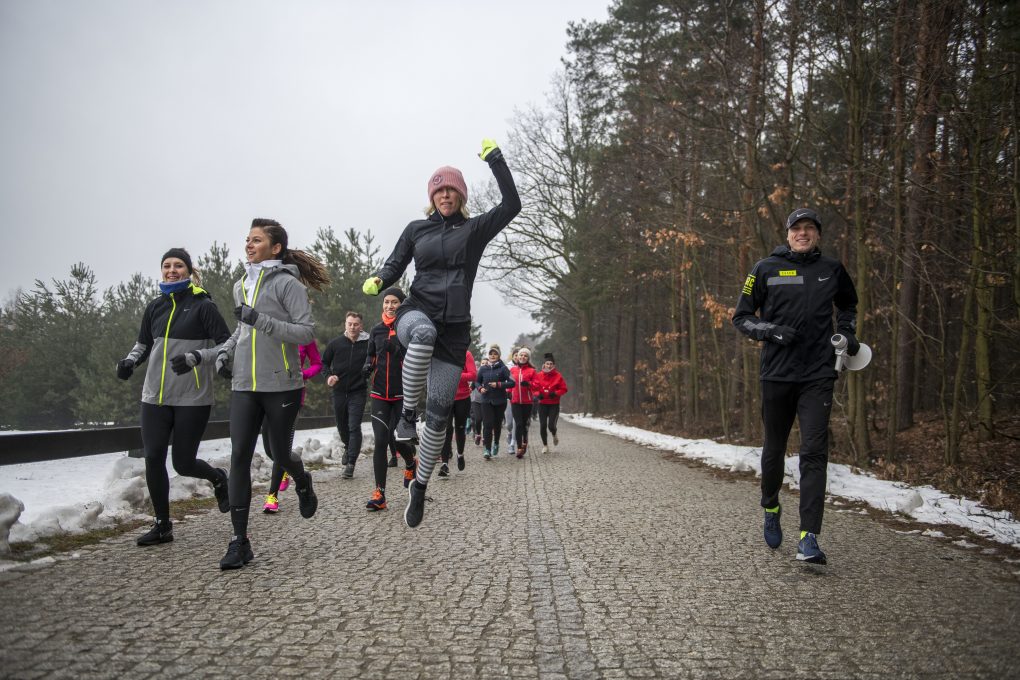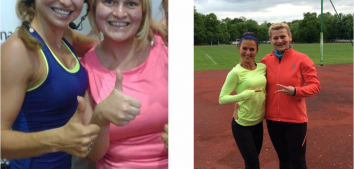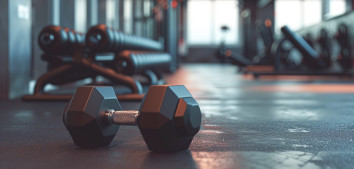
Winter running according to Kuba Wisniewski
Hardening, building a strength base, engaging many muscle groups – in short,this how you can sum up the advantages of running during. Regular running at lower temperatures is a panacea for winter lethargy.
Each training process requires time. Running also. In order to keep up the faster pace and build a form, you should go through the period of building the strength base. Winter is perfect for this.The low temperature is much more advantageous for runners than the high temperature. Uneven terrain and snow are a good incentive to work on stabilization and running strength – which will pay off in the warmer seasons.
When running in winter, it is advisable to reduce the intensity of running training. Of course, everything depends on your goals. However, I advise you to mainly train in the first intensity range. Units in higher ranges should occupy a maximum of 20% of the total number of sessions per month. The volume of a single unit can be larger. In short, run more in the winter, but calmer. Adjust each workout outside to the perceived temperature and surface condition. Do not hesitate to change specific assumptions.
For example, do you have to make intervals on an icy stadium?
Turn them into a running fun.
Do not look at this distance.
Reduce 10-15% both the duration of intense exercise in each interval and the length of the rest period.
Increase the number of repetitions by 1-2.
Did you plan a series of ascents but snow was falling all night?
Turn uphill sections for the same half-length skips in the snow.
For those who do not like running in winter, the alternative is training on a treadmill.
However, believe that you can cope in all conditions.
Winter running outside is also an acceleration for the metabolism slowed down in our climate.
Movement oxygenation and winter sun will make it easier to deal with vitamin D deficiency. According to many studies, they are a great way to seasonal depression. Thanks to running at temperatures below zero, we also train resistance and we are less susceptible to colds or infections.
How to avoid injuries typical for winter?
Here I have asked Kuba Wiśniewski – running coach and sports journalist. Healthy Team Trainer.
Po trzecie.
First
Remember that in January and February you can adjust each workout to the temperature and surface.
If you have faster running plans, start training with a short warm-up at home.
Secondly.
Dress warm, but not too warm, after leaving it should be cold for a moment, but after a few minutes of running you will definitely get warm. Always wear bright elements on the outerwear.
Thirdly.
Limit the standing and talking during the training, and if you have to do some exercises, chose those made in motion.
Fourthly.
Take care of a quick hydration and change into dry clothes immediately after running.
It is known that the vision of frost and ice is a challenge for runners. You can not develop your maximum speed, and training does not always end with endorphins. In winter, however, we train not only the body but also the psyche. Let’s enjoy small victories and let’s bear in mind that each training builds a solid foundation for spring.
If you start running in winter and persevere until April, then you have the motivation worth a medal!

Kuba Wiśniewski – Healthy Team.
Running coach and sports journalist. An athletics instructor and a great enthusiast of endurance sports. Head Coach of Nike + Run Club in Poland.
For over 25 years associated with high-performance running. He has medals from the Polish Championships in long runs. A member of the Polish Athletics national team. He specialized in running on 3000 m with obstacles, for several years he has been trying his abilities in street and mountain runs.
Kuba has graduated from the Inter-Faculty Individual Studies at the Humanities Studies and from the Faculty of Journalism and Political Sciences of the University of Warsaw.
For over a dozen years, he has been training runners, both competitive and less experienced. He believes in gradual improvement and in the fact that everyone is created for activity. Co-organizes running camps like Tatra Running, he is also the editor of the Polish edition of the Runners’ World monthly.
He lives to run. He runs to live.
In short breaks between running, he likes to read, he is also interested in the anthropology of culture.








Comments No Comments
Join the discussion…